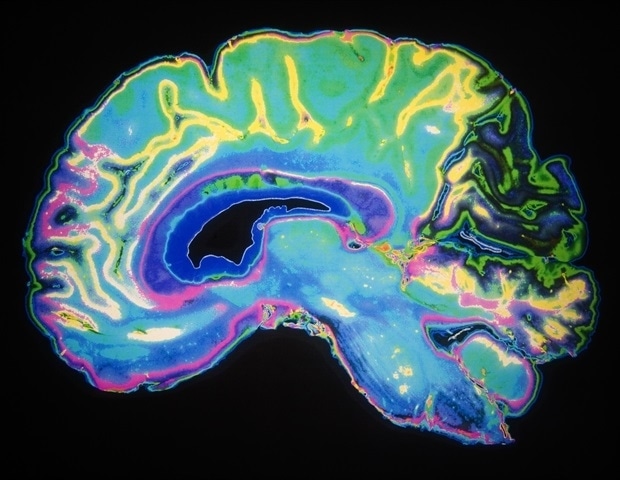
Air high quality within the workplace could have an effect on our stage of creativity at work, scientists at Nanyang Technological College, Singapore (NTU Singapore) have discovered.
Working with the worldwide air filter producer Camfil on a shared analysis challenge, the NTU Singapore scientists present in a examine that top ranges of risky natural compounds – gases launched from merchandise resembling detergents, pesticides, perfumes, aerosol sprays and paint – affected the examine members’ creativity after they had been requested to construct 3D fashions with LEGO bricks.
Utilizing a statistical evaluation, the NTU workforce estimated that lowering whole risky natural compounds (TVOC) by 72 per cent may enhance a pupil’s inventive potential by 12 per cent.
TVOC is an indicator that refers back to the quantity of risky natural compounds within the air. Indoor VOCs are emitted from inside ornament sources resembling paints and carpets and family merchandise resembling detergents and air fresheners.
This examine, performed on the NTU Sensible Campus, is a part of a partnership between the College and Camfil to research the influence of indoor air high quality on the cognitive efficiency of adults, check numerous air filter applied sciences in tropical climate situations, and ship progressive clear air options mixed with optimised vitality effectivity.
The findings detailed within the examine, revealed in Scientific Reviews in September, make clear the significance of indoor air high quality on our inventive cognition, mentioned the analysis workforce led by Assistant Professor Ng Bing Feng and Affiliate Professor Wan Man Pun, Cluster Administrators for Sensible & Sustainable Constructing Applied sciences on the Power Analysis Institute @ NTU (ERI@N).
Asst Prof Ng mentioned: “Whereas most individuals would accurately affiliate indoor air high quality with results on the lungs, particularly since we simply emerged from a pandemic, our examine reveals that it may additionally have an effect on the thoughts and inventive cognition, or the flexibility to make use of information in an unconventional means. Our findings recommend that comparatively low TVOC ranges, even when nicely throughout the accepted threshold, may influence a person’s inventive potential.“
This might have critical penalties for industries that depend on creativity for the majority of their work. For example, artists typically use paints and thinners that launch excessive ranges of risky natural compounds and should not know they want ample air flow to clear them from their office. The findings additionally level to how making minor changes within the workplace, resembling lowering using aroma diffusers or making certain ample air flow, may positively influence staff and their productiveness.”
Affiliate Professor Wan Man Pun, Cluster Director for Sensible & Sustainable Constructing Applied sciences on the Power Analysis Institute
The examine additionally aligns with the Well being & Society and Mind & Studying analysis clusters below the analysis pillar of NTU 2025, the College’s five-year strategic plan.
The opposite scientists on the analysis workforce had been NTU PhD graduate Dr Shmitha Arikrishnan, former NTU senior analysis fellow Dr Adam Charles Robert, who’s presently a postdoctoral researcher at Singapore-ETH Centre, and NTU graduate Lau Wee Siang.
Assessing creativity by LEGO 3D fashions
To quantifiably assess inventive potential on this examine, the NTU workforce developed the Critical Brick Play technique, which is essentially tailored from the LEGO Critical Play framework. This device includes expressing ideas and concepts utilizing 3D fashions constructed with LEGO bricks.
A typical LEGO Critical Play session includes a facilitator who introduces a problem, to which members reply by constructing a mannequin utilizing LEGO bricks. Members then talk about their fashions and replicate on the constructing course of, prompted by the facilitator.
Within the Critical Brick Play technique designed by the NTU workforce, members don’t talk about their fashions and share their reflections in a bunch. As an alternative, they supply written descriptions of their LEGO fashions. These written descriptions and LEGO fashions are then scored by a panel of judges for creativity.
Asst Prof Ng defined: “Whereas the LEGO Critical Play framework has been utilized in numerous settings to unleash inventive considering and has even been used to help dementia sufferers, it doesn’t have a quantitative evaluation part and can’t systematically assess creativity. Because of this we added a part to attain members on their creativity.“
The scoring pointers for the members’ LEGO fashions had been developed primarily based on the Inventive Product Evaluation Matrix mannequin, which is used to grade creativity and has been validated in earlier research, he added.
The NTU researchers examined the scoring pointers to measure the diploma of consistency among the many totally different judges after they independently assessed the LEGO fashions, and concluded that the scoring pointers supplied had been dependable.
The researchers additionally examined the Critical Brick Play technique’s skill to measure what it was designed for by statistical analyses and located that the tactic was capable of cowl the important thing points of the Different Makes use of Process, a well known device that assesses creativity. Particularly, it assesses divergent considering, a thought course of used to generate inventive concepts by exploring many doable options.
The researchers mentioned that the Critical Brick Play technique additional assesses one other thought course of known as convergent considering, which focuses on arising with a single, well-established reply to an issue.
“Divergent and convergent considering are considered the central parts of creativity, however most present instruments are designed round divergent considering. Our Critical Brick Play technique provides worth by additionally overlaying the facet of convergent considering,” mentioned Asst Prof Ng.
How the examine was achieved
Over six weeks, the researchers gathered information from a pattern measurement of 87 undergraduate and postgraduate college students in a managed surroundings simulating an indoor workspace. Each week throughout three 40-minute periods, the examine members learn a abstract of a world concern – resembling local weather change, psychological well being, and poverty – after which supplied an answer by constructing a 3D mannequin utilizing LEGO bricks. The members had been then requested to provide a written description and rationalization for his or her fashions.
In every session, researchers various the air high quality of the workspace utilizing totally different mixtures of air filters contributed by Camfil. This various the extent of pollution within the air, together with carbon dioxide, PM2.5 (air pollution lower than 2.5 micrometres in diameter), and whole risky natural compounds (TVOC).
The members’ LEGO fashions and descriptions had been then graded by seven randomly chosen adults, who had been educated to familiarise themselves with the scoring pointers primarily based on:
- Originality: whether or not the answer is common or uncommon,
- Fluency: the extent of elaboration within the description of the answer, and
- Construct: how subtle, advanced, or aesthetic the answer is.
Hyperlink between TVOC ranges and creativity
The NTU workforce’s statistical evaluation of the members’ common scores and indoor air high quality information gathered from 18 periods revealed that members tended to show in inventive options with decrease scores – an indicator of decrease inventive potential – when the workspace had larger TVOC ranges.
Utilizing a statistical mannequin, the workforce calculated that lowering TVOC from a suitable threshold of 1,000 components per billion to 281 components per billion – or a 72 per cent discount in TVOC ranges – led to a 12 per cent enhance in inventive potential within the examine cohort.
Much less important relationships had been discovered between PM2.5 and creativity in addition to carbon dioxide ranges and creativity.
Asst Prof Ng mentioned: “The outcomes from this examine point out that creativity ranges may be linked to the focus of pollution in a room. Enhancing the air high quality might be a cost-effective resolution to enhance occupants’ creativity.”
Having uncovered a hyperlink between TVOC ranges and creativity, the analysis workforce is now finding out how TVOC and different indoor air pollution have an effect on cognitive processes by measuring members’ mind exercise.
Supply:
Journal reference:
Arikrishnan, S., et al. (2023). Experimental examine on the influence of indoor air high quality on creativity by Critical Brick Play technique. Scientific Reviews. doi.org/10.1038/s41598-023-42355-z.


